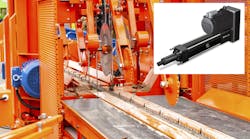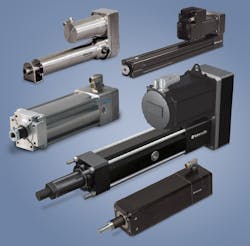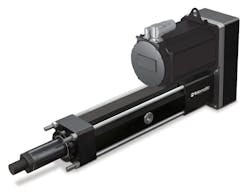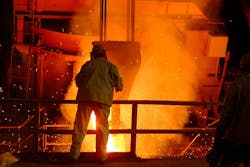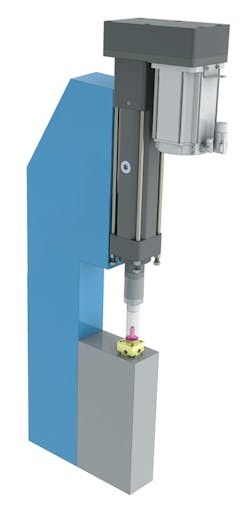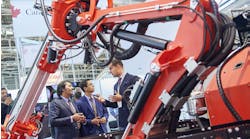Energy Efficiency
Electric actuators typically operate in the 75 to 80% efficiency range. In comparison, hydraulics typically range from 40 to 55% in efficiency and pneumatics have efficiencies in the 10 to 25% range. Many factors determine the efficiencies of fluid-power systems, including temperature, pressure, compressor designs, seal integrity and system leaks.
A significant factor in electric actuators’ efficiencies is that they only consume current in the drive motor when it is required. When at rest, electric actuators require little, or no (with a brake), current to hold position. Fluid-power actuators, on the other hand, always need pressurized fluid, which is an inefficient use of power.
Quiet and Compact
Not only do electric actuators save energy, but they also save overall space, which can be useful on crowded factory floors. Hydraulic systems require a cylinder, a power unit to provide oil pressure, control valves, filters and other ancillary components. Electric systems only require the actuator and motor itself and a relatively small control cabinet for the drive, which can usually be conveniently located near the point of use.
Power units running fluid cylinders are typically noisy, a nuisance and have the potential to damage the hearing of anyone working or even walking near them. Electric actuators are significantly quieter.
